لويز ألڤاريز
لويـز ألـڤـاريـز Luis W. Alvarez | |
|---|---|
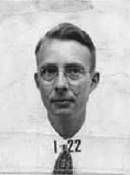 | |
| وُلِدَ | Luis Walter Alvarez يونيو 13, 1911 |
| توفي | سبتمبر 1, 1988 (aged 77) |
| المدرسة الأم | جامعة شيكاغو |
| الجوائز | جائزة نوبل في الفيزياء (1968) |
| السيرة العلمية | |
| المجالات | فيزياء |
| الهيئات | جامعة كاليفورنيا، بركلي |
لويز والتر ألڤاريز Luis Walter Alvarez، (و. 13 يونيو 1911 - 1 سبتمبر 1988) عالم فيزياء ومخترع أمريكي. درس الفيزياء في جامعة شيكاغو وقام بتدريس الفيزياء في جامعة كاليفورنيا، بركلي بعد ذلك. وحصل على جائزة نوبل في هذا الحقل العلمي عام 1968.
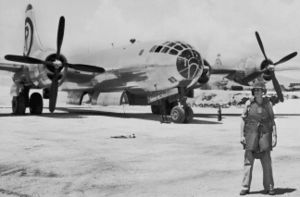
حصل على جائزة نوبل في الفيزياء عام 1968 "لإكتشافه عدد كبير من حالات الرنين، وقد مكنه من الإكتشاف تطويره لتقنية استعمال غرفة فقاعات الهيدروجين وتحليل البيانات." هذا البحث مكـَّن العلماء من تسجيل ودراسة الجسيمات قصيرة العمر التي تـُخلَق في مسرع الجسيمات. وفي 1987، منحته وزارة الطاقة الأمريكية جائزة إنريكو فرمي.
. . . . . . . . . . . . . . . . . . . . . . . . . . . . . . . . . . . . . . . . . . . . . . . . . . . . . . . . . . . . . . . . . . . . . . . . . . . . . . . . . . . . . . . . . . . . . . . . . . . . . . . . . . . . . . . . . . . . . . . . . . . . . . . . . . . . . . . . . . . . . . . . . . . . . . . . . . . . . . . . . . . . . . . .
حياته لاحقاً وانجازاته
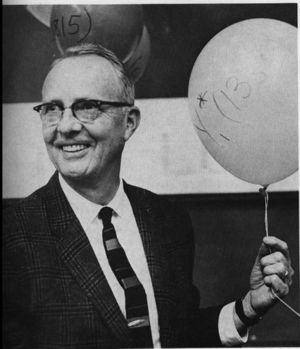
Returning to the University of California as a full professor, Alvarez had many ideas about how to use his wartime radar knowledge to improve particle accelerators. Though some of these were to bear fruit, the "big idea" of this time would come from Edwin McMillan with his concept of phase stability which led to the synchrocyclotron. Refining and extending this concept, the Lawrence team would build the world's then-largest proton accelerator, the Bevatron, which began operating in 1954. Though the Bevatron could produce copious amounts of interesting particles, particularly in secondary collisions, there were very few techniques up to the task of detecting these complex interactions.
Seizing upon a new development to visualize particle tracks, created by Donald Glaser and known as a bubble chamber, Alvarez immediately realized the potential of the device if only it could be made to function with liquid hydrogen. أنوية الهيدروجين، المكونة فقط من پروتونات، made the simplest and most desirable target for interactions with the particles produced by the Bevatron. He immediately began an intensive development program to build a series of small chambers, and championed the device to Ernest Lawrence.
The Glaser device was a small glass cylinder (1 cm × 2 cm) filled with ether. By suddenly reducing the pressure the liquid could be placed into a temporary superheated state which would only boil along the disturbed track of a particle passing through. Glaser was able to maintain the superheated state for a few seconds before spontaneous boiling took place. The Alvarez team quickly built chambers of 1.5 in, 2.5 in, 4 in, 10 in, and 15 in using liquid hydrogen and constructed of metal with glass windows so that the tracks could be photographed. Another breakthrough was to cycle the chamber quickly in synchronization with the accelerator beam, take the picture, and then recompress the chamber in time for the next beam cycle.
Ultimately, this program would build a liquid hydrogen bubble chamber almost 7 feet (2 meters) long, employ dozens of physicists and graduate students together with hundreds of engineers and technicians, take millions of photographs of particle interactions, develop complex computer systems to measure and analyze these interactions, and discover entire families of new particles and resonance states. كل هذا العمل نتج عنه جائزة نوبل في الفيزياء لألڤاريز في 1968
For his decisive contributions to elementary particle physics, in particular the discovery of a large number of resonant states, made possible through his development of the technique of using hydrogen bubble chambers and data analysis.[1]
وفي 1964 اقترح ألڤاريز ما صار يُعرف باسم High Altitude Particle Physics Experiment (HAPPE), originally conceived as a large superconducting magnet carried to high altitude by a balloon in order to study extremely high-energy particle interactions.[2] In time the focus of the experiment changed more toward the study of cosmology ودور كلٍ من الجسيمات والإشعاع في الكون المبكر. This work was a large effort, carrying detectors aloft with high-altitude balloon flights and high-flying U2 aircraft, and was an early precursor of the COBE satellite-born experiments on the cosmic background radiation (which resulted in the award of the 2006 Nobel Prize, shared by جورج سموت وجون ميذر.[2])
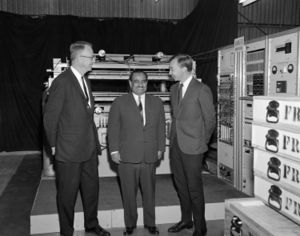
اقترح ألڤاريز في 1965 أن "يصور بالآشعة السينية" الأهرامات المصرية بحثاً عن غرف غير معروفة. وباستخدام آشعة كونية متواجدة طبيعياً، فقد كانت خطته العبقرية تتلخص في وضع spark chambers، التي كانت أجهزة قياسية في فيزياء جسيمات الطاقة العالية لذلك الوقت، تحت الهرم الثاني لخفرع في غرفة معروفة. وبقياس معدل العد للآشعة الكونية في مختلف الاتجاهات، فإن الكشاف سوف يكشف عن وجود أي تجويف في المنشأ الصخري التراكمي.[3]
جمّع ألڤاريز فريقاً عالمياً من الفيزيائيين وعلماء الآثار من كل من الولايات المتحدة ومصر، وتم بناء جهاز التسجيل وأجروا التجربة، بالرغم من أنها تعطلت بسبب حرب 1967. وعاود التجربة بعد الحرب، وتواصل الجهد، مسجلاً ومحللاً الآشعة الكونية المخترقة للهرم حتى 1969 حين كتب ورقة بحثية في الجمعية الفيزيائية الأمريكية أنه لم يعثر على أي غرف في 19% من جسم الهرم الذي تم مسحه.[4]
In November 1966 Life published a series of photographs from the film that Abraham Zapruder took of the Kennedy assassination. Alvarez, an expert in optics and photoanalysis, became intrigued by the pictures and began to delve deeply into what could be learned from the film. The result of this was that Alvarez proved conclusively both in theory and experiment that the backward snap of the President’s head was completely consistent with his being shot from behind. He also investigated the timing of the gun shots and the shockwave which disturbed the camera, the speed of the camera, and pointed out a number of things which the FBI photoanalysts either overlooked or got wrong. He produced a paper intended as a tutorial, with informal advice for the physicist intent on arriving at the truth.[4]
المراجع
- Alvarez, Luis W., 1987. Alvarez: Adventures of a Physicist, New York: Basic Books. ISBN 0465001157
أعماله المنشورة
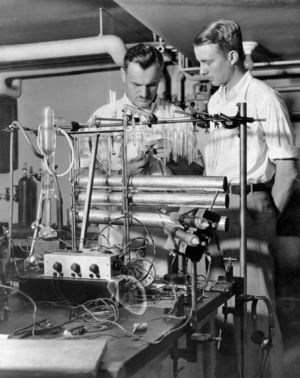
- "Berkeley Proton Linear Accelerator," Radiation Laboratory, University of California, Berkeley (Oct. 13, 1953).
- "High-energy Physics with Hydrogen Bubble Chambers," Radiation Laboratory, University of California, Berkeley (Mar. 7, 1958).
- “LRL 25-inch Bubble Chamber," Lawrence Radiation Laboratory, University of California, Berkeley (July 8, 1964).
- “Early Days of Accelerator Mass Spectrometry," Lawrence Berkeley Laboratory (May 1981).
- “The Hydrogen Bubble Chamber and the Strange Resonances," Lawrence Berkeley National Laboratory (June 1985).
- “History of Proton Linear Accelerators," Lawrence Berkeley Laboratory (Jan. 1987).
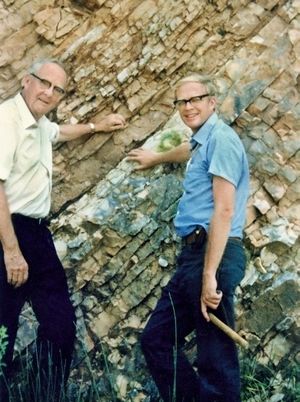
وصلات خارجية
- Nobel biography
- About Luis Alvarez
- IEEE interview with Johnston, patentholder of the exploding-bridgewire detonator
- Weisstein, Eric W., Alvarez, Luis W. (1911-1988) at ScienceWorld.
- Annotated bibliography for Luis Alvarez from the Alsos Digital Library for Nuclear Issues
- ^ "Luis Walter Alvarez, 1968 Nobel Prize in Physics citation". The Royal Swedish Academy of Sciences. 1968.
- ^ أ ب Alvarez, L.W. (1964). "A Study of High Energy Interactions using a "Beam" of Primary Cosmic Ray Protons" (PDF). Alvarez Physics Memo (503).
- ^ Alvarez, L.W. (1965). "A Proposal to "X-Ray" the Egyptian Pyramids to Search for Presently Unknown Chambers" (PDF). Alvarez Physics Memo (504).
- ^ أ ب Trower, W.P. (1987). Discovering Alvarez: Selected Works of Luis W.Alvarez with Commentary by His Students and Colleagues. University of Chicago Press. ISBN 0-226-81304-5.